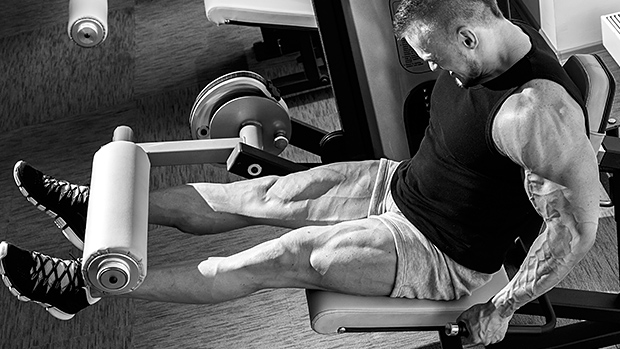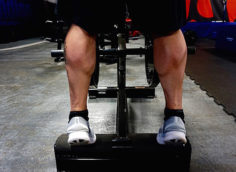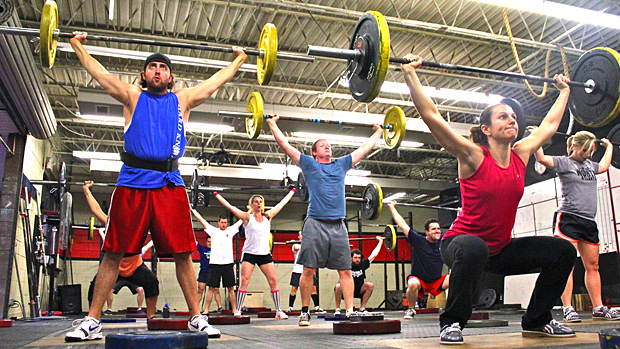Supersets give you an amazing pump, but the muscle damage that occurs with supersets lasts longer than regular training according to a new study, so plan them wisely.
Note: In the study below, the style of superset used was: compound exercise then isolation exercise for the same muscle group, no rest between the two.
The Study
Twenty-two active men were recruited for the study. They were then split into two groups: a superset group and a non-superset group. The workout for both groups was composed of 4 exercises (leg press, leg extension, bench press, and pec deck) for 5 sets of 8-10 reps at 85% of the subjects 10RM. Here's the breakdown for each group:
Superset Group
- Leg press immediately followed by leg extension, 3 minutes rest, repeat 5 times.
- Bench press immediately followed by pec deck, 3 minutes rest, repeat 5 times.
Non-Superset Group
- Bench press immediately followed by leg extension, 3 minutes rest, repeat 5 times.
- Leg press immediately followed by pec deck, 3 minutes rest, repeat 5 times.
EMG during the leg extension and pec deck was recorded. Delayed onset muscle soreness (DOMS), isometric torque for horizontal shoulder flexion and knee extension, creatine kinase levels, and ROM for the shoulder and knee extensors were measured before the intervention and for five days following the intervention.
What They Found
- Both groups performed similar amounts of exercise volume and workout times were similar.
- DOMS was similar between groups.
- Isometric torque was decreased in both groups immediately following the workout, but returned to baseline values after about a day.
- ROM was decreased in both groups, but decrements lasted longer in the superset group compared to the non-superset group.
- Creatine kinase levels were significantly elevated in both groups from baseline values. In the non-superset group values were not different from baseline on day 5, but were still significantly higher than baseline in the superset group on day 5.
- EMG in the rectus femoris and in the anterior deltoid were elevated in the superset groups.
What This Means
Even though the workout volume and total time was similar, supersets can drastically alter the training stimulus.
Supersets should be programmed in properly, and most likely sparingly, depending on the workout split you're using and muscle group you're working. Even though isometric torque values (force generation) rapidly returned to baseline, creatine kinase levels in the superset group were still significantly elevated five days later indicating muscle damage.
Because these weren't resistance trained males, and those with greater amounts of resistance training would most likely show lower levels of markers of muscle damage following a workout, the need for greater training stimulus from supersets in resistance trained subjects may be warranted.
Supersets are a great tool in a lifter's arsenal, but overuse without sufficient recovery between workouts could become a problem. Plan their usage wisely.
Reference
- Brentano, MA, Umpierre, D, Santos, LP, Lopes, AL, Radaelli, R, Pinto, RS, and Kruel, LFM. Muscle damage and muscle activity induced by strength training super-sets in physically active men. J Strength Cond Res 31(7): 1847–1858, 2017





